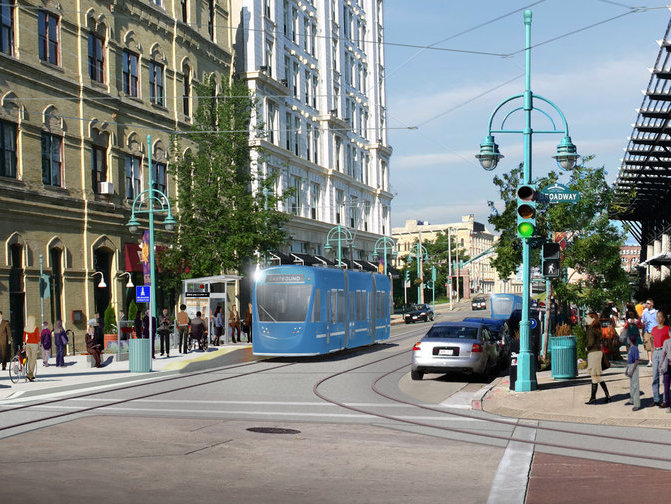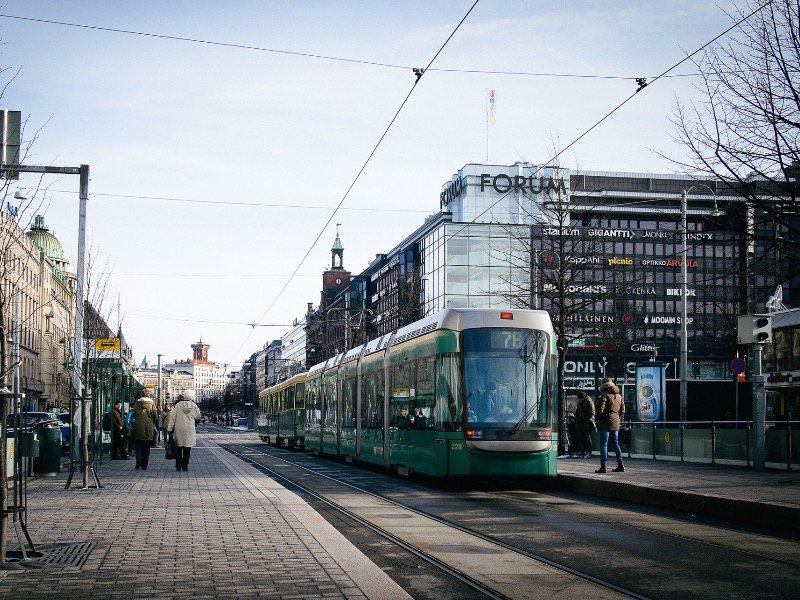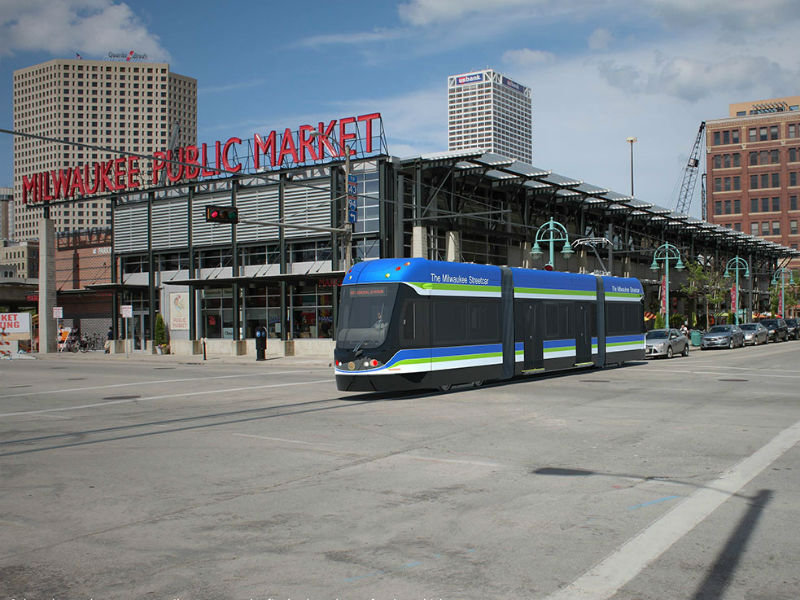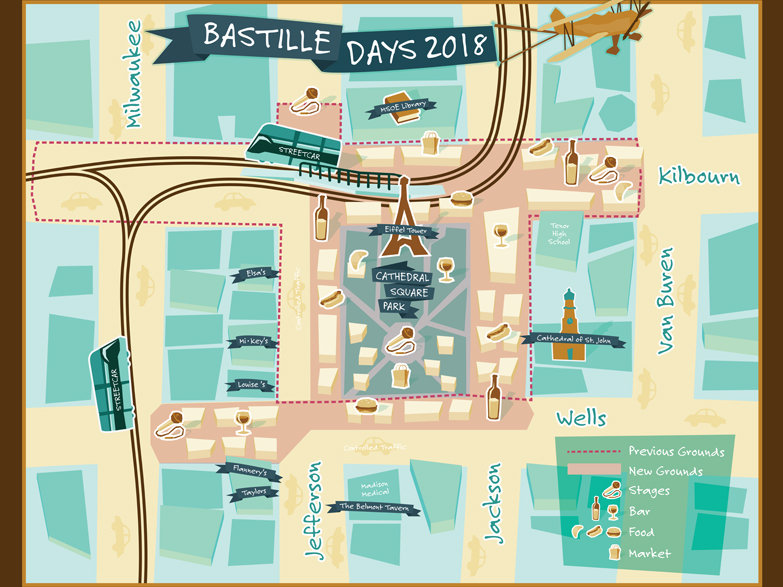It's an argument that makes a certain kind of intuitive sense, even though it's wrong: When property in the city isn't counted on the tax rolls because it's part of a tax incremental financing (TIF) district, agencies that rely on property taxes for revenue – the Milwaukee Public Schools, Milwaukee County, the city itself, and more – would see a loss of revenue to pay for important things like teachers or firefighters or 911 operators.
In particular, the argument that schools will be big losers if the city creates a TIF district for the Milwaukee Streetcar has been tossed about multiple times recently from different directions. Clearly, it's a ploy to make Big City Liberals like me feel conflicted about supporting Mayor Tom Barrett's streetcar plan. We may like shiny new transit options, the opponents' calculus goes, but we like teachers more. After all, didn't we all go march in Madison a few years ago to support teachers and their unions?
So they think we'll vote down the streetcar if we think it means sacrificing school funding.
But opponents are playing fast and loose with the facts, is what they're doing. Last week Milwaukee Ald. Joe Davis, a streetcar opponent and announced candidate for mayor against Barrett in 2016, earned a "Mostly False" from PolitiFact Wisconsin for saying the streetcar would "take precious revenue away" from MPS.
MPS issued a terse, one-sentence statement to PolitiFact and the rest of the media about the streetcar funding issue: "TIF districts do not directly impact MPS' revenue authority under the funding rules for K-12 education."
I think the district is really trying to stay out of the streetcar fight, and almost no one from MPS would talk to me on or off the record for this column, so expecting any elaboration on that short statement from official channels is hopeless.
But you don't need someone from MPS to tell you why Davis and the other streetcar opponents are wrong. Milwaukee Public Schools, like every other school district in this state, is under a legislatively-imposed "revenue cap" that limits how much money can be collected in property taxes and state aid per student enrolled. It wouldn't matter if, say, Apple moved its headquarters from Cupertino to Walker's Point tomorrow, sending property values through the roof -- the state of Wisconsin wouldn't let MPS collect one additional dime of property taxes.
We could disappear all of the TIFs in the city – more than 40 of them, many supported by Joe Davis and other streetcar opponents like Ald. Bob Donovan – and MPS still would not see an increase in its budget.
What might well happen if Apple showed up or all the TIFs expired is a decrease in state equalization aid. If it looks like the city has more valuable property to tax, the state will supply fewer dollars in aid and expect city property taxpayers to make up the difference. That happens now in wealthy parts of the state – the richest districts sometimes collect more in property taxes than MPS spends in total per student.
So why are opponents making this a part of their argument? Is it mendacity or a misunderstanding of how the process works? Well, I'd like to believe that aldermen, in particular, know how TIFs work.
Regular people like you and me may not know how they work, though, but that's what I'm here for, to figure this stuff out and report back to you.
Tax incremental financing districts are, at bottom, loans, kind of like a second mortgage you might take out to build an addition to your house. The increase in the value of your home pays for the cost of building the addition and makes the new debt worth it. A new TIF for the streetcar, then, is a loan that would cover part of the cost of laying tracks and hanging wires and relocating utilities around the route.
Let's say that right now, a piece of property in the zone proposed for the new streetcar TIF generates $100 in property taxes; that money goes right now to fund MPS and pay police and fix potholes and put diesel in county buses. After the streetcar is built, though, let's say the value of that property increases and it generates $120 in property taxes. The first $100 of that still goes to fund MPS and pay police and fix potholes and put diesel in county buses. It's only the additional $20 that goes to repay the TIF loan.
Neither MPS nor any other entity taking property taxes loses a single penny.
Plus, you, as a property tax payer, also aren't on the hook for any additional pennies, since there's not been a decrease in tax collections. A new TIF means that, sure, your property taxes won't be any lower, but it also means they don't have to increase to make up any difference, and that's good news.
The other good news is that the TIF will eventually expire – some day, that loan will be paid back. At that point, all $120 would be available to the taxing entities. Of course, because MPS is under a revenue limit, that still wouldn't mean any more teachers in the classroom or books on the shelves. As I noted, it might mean a drop in state equalization aid or, best-case scenario, slightly lower property tax bills for all of us because the same amount of taxes would be collected from a larger pool of property value.
(I guess there's a chance that in the 20 years this TIF lasts, the state will lift the school district revenue limit – but it's about the same as the chance Apple will move its headquarters to Walker's Point.)
So if opponents do understand the process, that only leaves mendacity as an explanation, the idea that they're willing to stretch the truth or outright lie to defeat this thing. And it takes some gall for a guy like Donovan, who has a long history of trashing MPS, to try to manipulate the sympathies of MPS supporters in service of defeating the streetcar.
If we don't build the streetcar, and additional development and investment in Milwaukee's downtown don't happen, then the value of that property never increases and the tax base never expands. Will some of the development proposed for the TIF zone, like the Couture building, really happen? Maybe, but certainly not everything that's been suggested.
But why take the chance? Right now, we have dozens of business leaders in Milwaukee asking the city to move forward with the plan. We've even got Johnson Controls saying they'd like to build Wisconsin's tallest building right there by the streetcar – a development that wouldn't even be in the TIF. Why ignore that?
The one Milwaukee Public Schools-related person who would talk to me – though speaking as a citizen of Milwaukee, not as someone speaking for MPS, I want to make that clear – was outgoing school board member Meagan Holman, who summed it up nicely. "I see the streetcar as a chance to revitalize downtown," she told me, "and bring more young professionals and growing families into walkable, transit-oriented neighborhoods … As it increases our tax base and enrollment, would only result in gains for MPS."
The streetcar, with additional development in town and potentially many new families, can easily be a long-term win for MPS.
Because the only thing – the only, only thing – that will increase funding to MPS is a boost to enrollment, and that won't happen if this city keeps rejecting ideas to help us grow.







